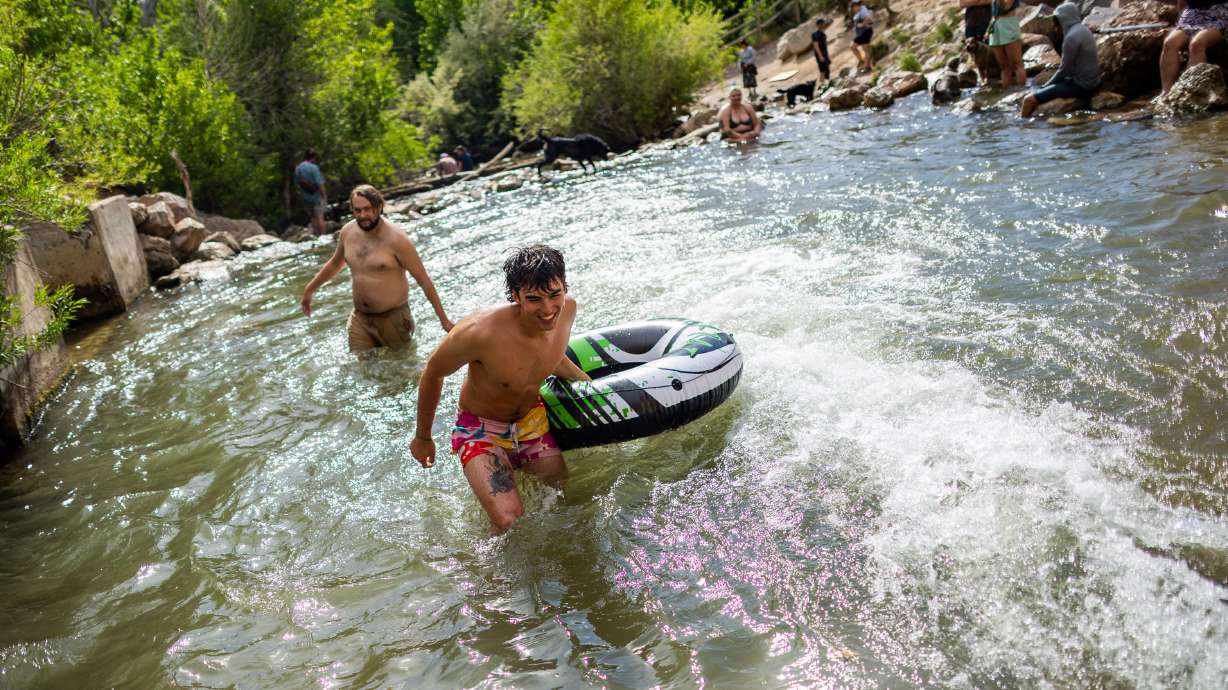- Utah faces a heat wave with advisories issued for critical fire conditions and heat-related illnesses.
- Rocky Mountain Power warns of high energy demand as Utah faces a heat wave.
- Temperatures are expected to reach triple digits in Salt Lake City and close to 110 degrees in St. George before a weekend cooldown.
SALT LAKE CITY — Utah's first real heat wave of the year has sparked a slew of advisories, while the state's largest power provider is bracing for higher demands.
The National Weather Service issued a series of red flag warnings that blanket most of the state, which will be in effect between Thursday afternoon and Saturday morning. Heat, low relative humidity and wind are forecast to blend into "critical fire weather conditions," where existing fires may grow an new wildfires may begin.
There are currently three active fires in the state, all of which are in southern Utah. The largest of which is the France Canyon Fire that has burned close to 5,000 acres in Dixie National Forest.
Federal forecasters also issued a heat advisory for the Wasatch Front, Tooele Valley and parts of northern Utah. High temperatures across those regions are forecast to jump from the mid-to-upper 80s on Tuesday to upper 90s and low 100s by Thursday.
Temperatures could reach as high as 110 degrees in the St. George area by Thursday, as well. Residents are encouraged to stay hydrated and reduce strenuous activities outside as much as possible during the heat of the day to reduce the risk of heat-related illnesses.
Rocky Mountain Power officials said on Tuesday they're expecting energy demands to peak between 3 p.m. and 8 p.m. as people operate their air conditioners and irrigation systems, which is typically the case during summertime heat. While it expects to meet peak hour needs, the company is urging residents to take steps to avoid a "strain" on the state's electrical grid.
"More electricity is used by our customers during the summer season than at any other time of the year. We encourage customers to take steps now to manage their energy use and take advantage of incentives to increase energy efficiency at home," said Curt Mansfield, Rocky Mountain Power's senior vice president of power delivery.
Rocky Mountain Power tips for reducing energy impact
- Move energy usage up to the early morning hours or push it to the late evening hours when possible.
- Set the thermostat on central air conditioning at 78 degrees Fahrenheit or higher, health permitting.
- Turn off lights and appliances when you are not using them.
- Open windows in the cool of the evening and again in early morning to let in cool air. The intake setting on window fans can help bring in cooler air.
- Keep air moving inside your home with ceiling, window, attic and portable fans.
The incoming heat wave is the result of a shift in patterns, which will make this June even hotter than it has already been. A small cold front will exit Utah by the end of Tuesday, allowing "dry, hot air" from the Southwest to flow into the state as it's pushed north by a high-pressure system currently set up over the New Mexico-Mexico border, KSL meteorologist Matt Johnson explained.
Impacts on the state's power grid aren't the only concern. Windy and breezy conditions are also forecast along with the heat, which will likely create higher fire danger, Johnson added.
The forecasted heat is arriving a little earlier than usual, as Salt Lake City's normal first 100-degree day is around the second week of July. That said, this week wouldn't be the earliest on record. That record remains June 4, set four years ago.
2021 also produced Salt Lake City's hottest June on record. The city's average temperature this month is about four degrees above normal and just outside its top five hottest on record, per National Weather Service data.
Yet, a reprieve from the heat is on the horizon. Another change in patterns is projected, as a dry cold front from the Pacific Northwest is forecast to arrive in Utah over the weekend. It's expected to lower Wasatch Front high temperatures down to the low- to mid-70s by Sunday. Highs could top out in the mid-90s across St. George before another warmup next week.
Full seven-day forecasts for areas across Utah can be found online at the KSL Weather Center.









